Deletion of annexin 2 light chain p11 in nociceptors causes deficits in somatosensory coding and pain behavior
- PMID: 17035534
- PMCID: PMC6674704
- DOI: 10.1523/JNEUROSCI.1997-06.2006
Deletion of annexin 2 light chain p11 in nociceptors causes deficits in somatosensory coding and pain behavior
Abstract
The S100 family protein p11 (S100A10, annexin 2 light chain) is involved in the trafficking of the voltage-gated sodium channel Na(V)1.8, TWIK-related acid-sensitive K+ channel (TASK-1), the ligand-gated ion channels acid-sensing ion channel 1a (ASIC1a) and transient receptor potential vanilloid 5/6 (TRPV5/V6), as well as 5-hydroxytryptamine receptor 1B (5-HT1B), a G-protein-coupled receptor. To evaluate the role of p11 in peripheral pain pathways, we generated a loxP-flanked (floxed) p11 mouse and used the Cre-loxP recombinase system to delete p11 exclusively from nociceptive primary sensory neurons in mice. p11-null neurons showed deficits in the expression of Na(V)1.8, but not of annexin 2. Damage-sensing primary neurons from these animals show a reduced tetrodotoxin-resistant sodium current density, consistent with a loss of membrane-associated Na(V)1.8. Noxious coding in wide-dynamic-range neurons in the dorsal horn was markedly compromised. Acute pain behavior was attenuated in certain models, but no deficits in inflammatory pain were observed. A significant deficit in neuropathic pain behavior was also apparent in the conditional-null mice. These results confirm an important role for p11 in nociceptor function.
Figures
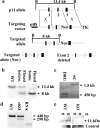
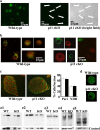
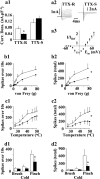
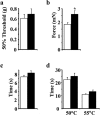
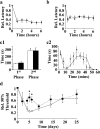
Similar articles
-
Annexin II light chain p11 promotes functional expression of acid-sensing ion channel ASIC1a.J Biol Chem. 2005 Nov 18;280(46):38666-72. doi: 10.1074/jbc.M505981200. Epub 2005 Sep 16. J Biol Chem. 2005. PMID: 16169854
-
Nociceptor-specific gene deletion reveals a major role for Nav1.7 (PN1) in acute and inflammatory pain.Proc Natl Acad Sci U S A. 2004 Aug 24;101(34):12706-11. doi: 10.1073/pnas.0404915101. Epub 2004 Aug 16. Proc Natl Acad Sci U S A. 2004. PMID: 15314237 Free PMC article.
-
Bidirectional regulation of emotional memory by 5-HT1B receptors involves hippocampal p11.Mol Psychiatry. 2013 Oct;18(10):1096-105. doi: 10.1038/mp.2012.130. Epub 2012 Oct 2. Mol Psychiatry. 2013. PMID: 23032875 Free PMC article.
-
Modulation of Ion Channels and Receptors by p11 (S100A10).Trends Pharmacol Sci. 2020 Jul;41(7):487-497. doi: 10.1016/j.tips.2020.04.004. Epub 2020 May 14. Trends Pharmacol Sci. 2020. PMID: 32418644 Review.
-
p11 (S100A10)--an inducible adaptor protein that modulates neuronal functions.Curr Opin Pharmacol. 2007 Feb;7(1):27-32. doi: 10.1016/j.coph.2006.10.001. Epub 2006 Nov 7. Curr Opin Pharmacol. 2007. PMID: 17085073 Review.
Cited by
-
Fabry disease Schwann cells release p11 to induce sensory neuron hyperactivity.JCI Insight. 2024 Mar 7;9(8):e172869. doi: 10.1172/jci.insight.172869. JCI Insight. 2024. PMID: 38646936 Free PMC article.
-
Inhibition of somatosensory mechanotransduction by annexin A6.Sci Signal. 2018 Jun 19;11(535):eaao2060. doi: 10.1126/scisignal.aao2060. Sci Signal. 2018. PMID: 29921656 Free PMC article.
-
Annexin A2 regulates TRPA1-dependent nociception.J Neurosci. 2014 Oct 29;34(44):14506-16. doi: 10.1523/JNEUROSCI.1801-14.2014. J Neurosci. 2014. PMID: 25355205 Free PMC article.
-
A multi PDZ-domain protein Pdzd2 contributes to functional expression of sensory neuron-specific sodium channel Na(V)1.8.Mol Cell Neurosci. 2009 Nov;42(3):219-25. doi: 10.1016/j.mcn.2009.07.003. Epub 2009 Jul 14. Mol Cell Neurosci. 2009. PMID: 19607921 Free PMC article.
-
Annexin A2 complexes with S100 proteins: structure, function and pharmacological manipulation.Br J Pharmacol. 2015 Apr;172(7):1664-76. doi: 10.1111/bph.12978. Epub 2014 Dec 15. Br J Pharmacol. 2015. PMID: 25303710 Free PMC article. Review.
References
-
- Akopian AN, Sivilotti L, Wood JN. A tetrodotoxin-resistant voltage-gated sodium channel expressed by sensory neurons. Nature. 1996;379:257–262. - PubMed
-
- Akopian AN, Souslova V, England S, Okuse K, Ogata N, Ure J, Smith A, Kerr BJ, McMahon SB, Boyce S, Hill R, Stanfa LC, Dickenson AH, Wood JN. The tetrodotoxin-resistant sodium channel SNS has a specialized function in pain pathways. Nat Neurosci. 1999;2:541–548. - PubMed
-
- Deora AB, Kreitzer G, Jacovina AT, Hajjar KA. An annexin 2 phosphorylation switch mediates p11-dependent translocation of annexin 2 to the cell surface. J Biol Chem. 2004;279:43411–43418. - PubMed
-
- Donier E, Rugiero F, Okuse K, Wood JN. Annexin II light chain p11 promotes functional expression of acid-sensing ion channel ASIC1a. J Biol Chem. 2005;280:38666–38672. - PubMed
Publication types
MeSH terms
Substances
Grants and funding
LinkOut - more resources
Full Text Sources
Molecular Biology Databases
Miscellaneous
